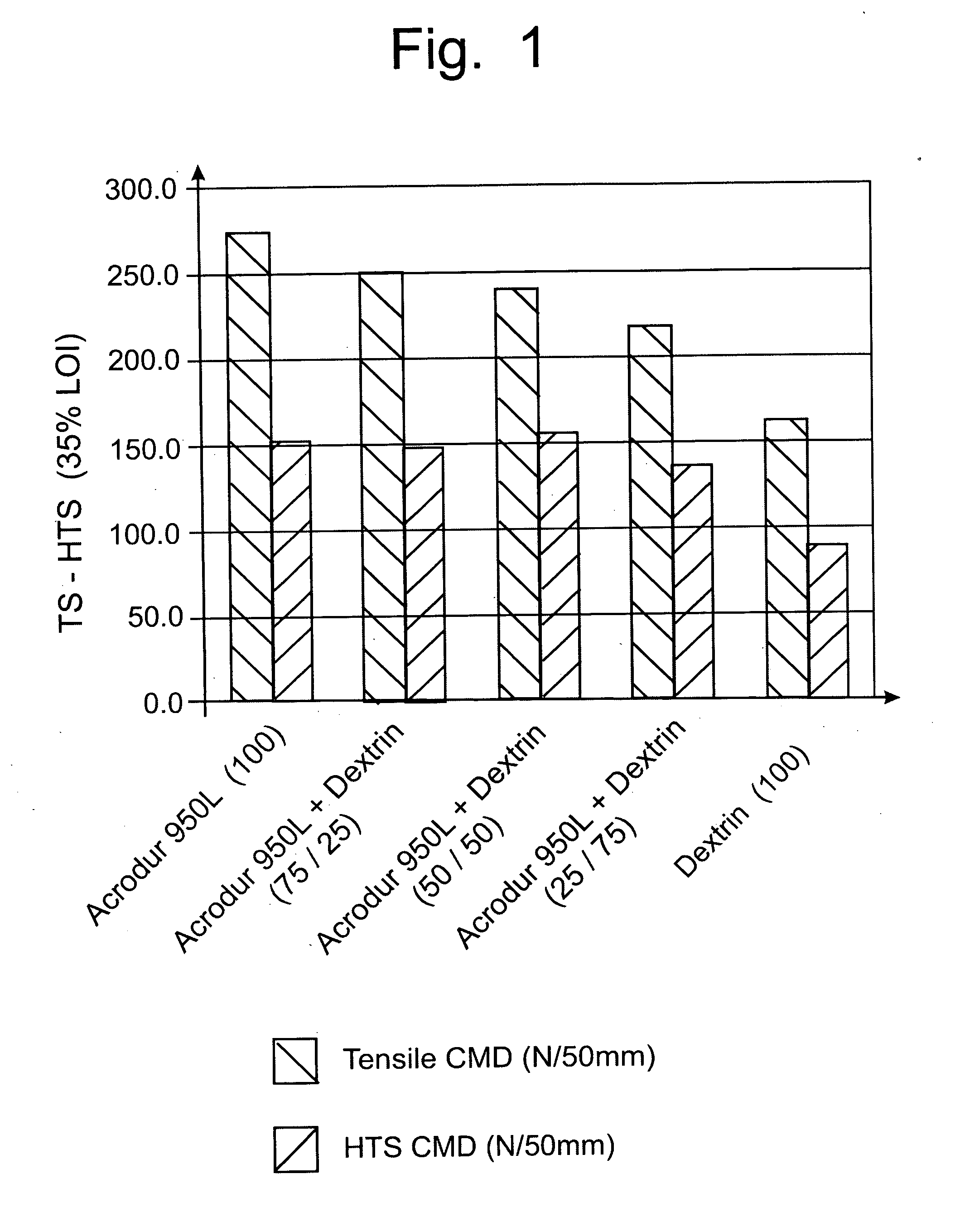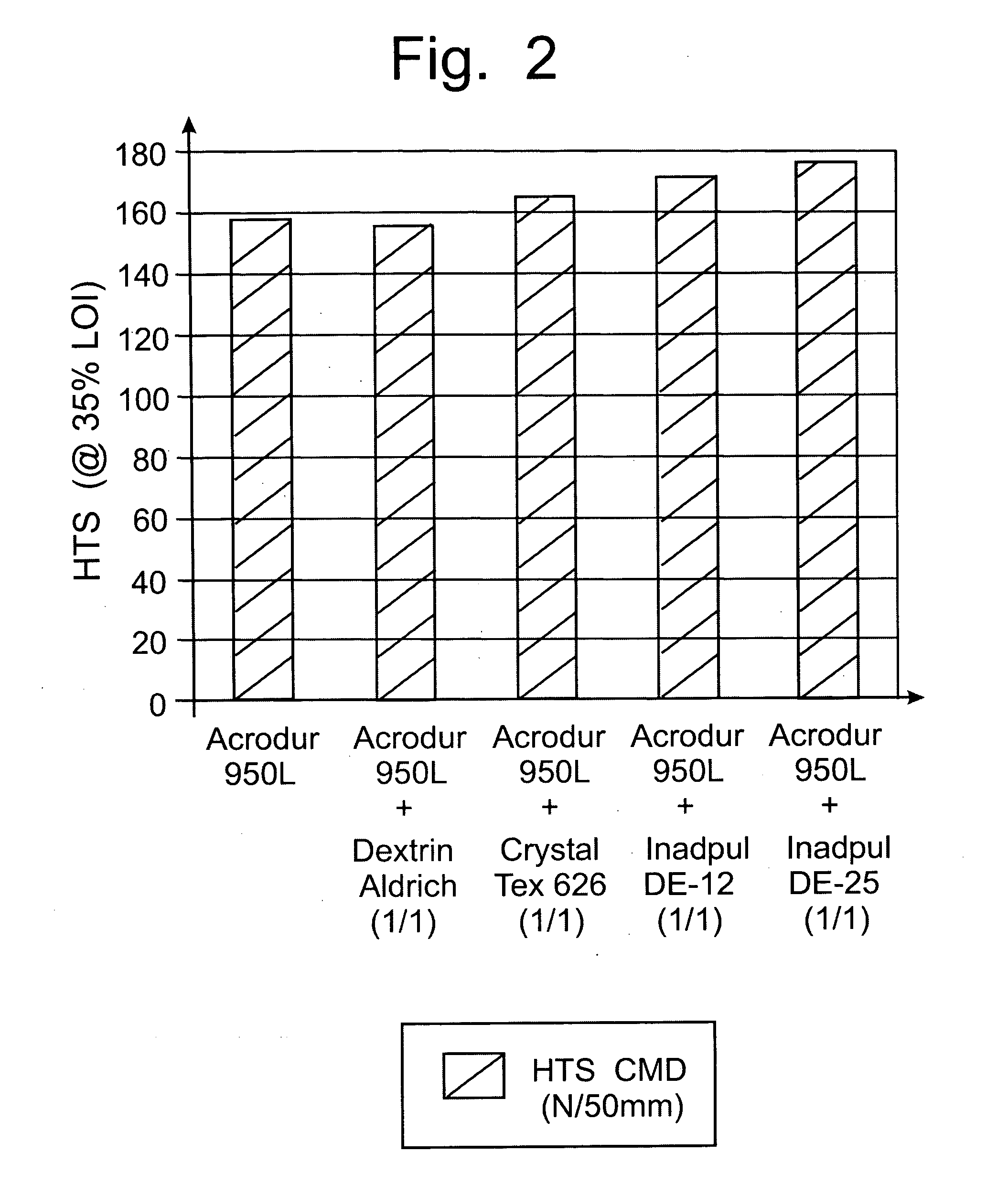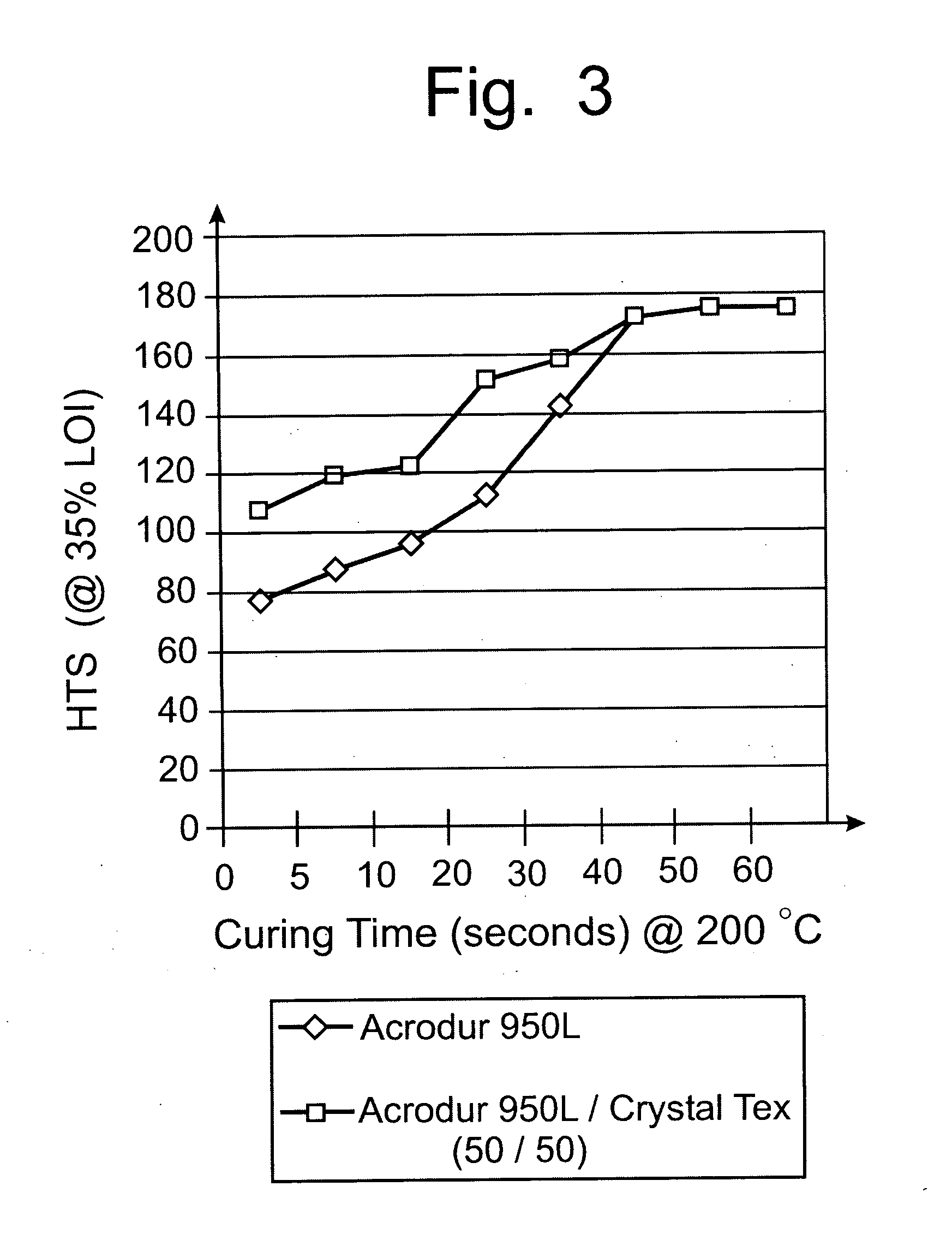Dextrin binder composition for heat resistant non-wovens
a non-woven, heat-resistant technology, applied in the direction of adhesive types, weaving fabrics, weaving, etc., can solve the problems of unsatisfactory formaldehyde release, significant amount of formaldehyde, toxic formaldehyde, etc., to reduce the amount of polycarboxylic acid based binders, high hot tensile strength, and cost reduction
- Summary
- Abstract
- Description
- Claims
- Application Information
AI Technical Summary
Benefits of technology
Problems solved by technology
Method used
Image
Examples
example 1
Tensile Strength and Hot Tensile Strength of Dextrin Binder Compositions versus Polycarboxylic Acid Based Binder Composition
[0056] 13% PVA pre-bonded veils (11 micron, 6 mm glass fibers) were treated with binder compositions differing in pre-binder:dextrin ratio. The binder compositions included 100% Acrodur 950L, 75% Acrodur 950L / 25% dextrin, 50% Acrodur 950L / 50% dextrin, 25% Acrodur 950L / 75% dextrin, and 100% dextrin. Acrodur 950L is a polycarboxylic acid based binder composition that contains a modified polycarboxylic acid with a polyfunctional alcohol as a crosslinking agent (available from BASF). The dextrin used this example was a lab grade yellow dextrin obtained from Aldrich (Dextrin 26.075-4).
[0057] To form the various dextrin based binder compositions, the desired amount dextrin (e.g., 75%, 50%, 25%) was added to Acrodur 950L in a 10-50% pre-diluted solution. Any dextrin particles that did not dissolve were easily filtered out before the binder was applied to the pre-bon...
example 2
Hot Tensile Strengths of Various Types of Dextrin Binder Compositions
[0059] Binder compositions formed of 50% Acrodur 950L / 50% dextrin were prepared and used to impregnate a 13% PVA pre-bonded veil (11 micron, 6 mm glass fibers). The total binder LOI was approximately 35%. The dextrins used were obtained from unmodified potatoes, borax modified potatoes, and tapioca. The specific dextrins used to make the binder compositions are set forth in Table 1. With the exception of Crystal Tex 626, the tested dextrins were easily dissolved in water and had clear solutions.
TABLE 1Viscosity of 10%Solution (1 / 1)StarchSolubilityAcrodurNameSupplierTypein WaterColor950L / DextrinDextrinAldrichPotatoes99.5%yellow3.3 cps26.075-4Crystal TexNationalTapiocahighoff-white3.1 cps626StarchK4484NationalTapiocahighpale yellowStarchInadpul DE-25InternationalPotatoes 100%pale brown3.3 cpsAdhesives(borax(pH: 9.5)Bel.modified)Inadpul DE-12InternationalPotatoes 100%pale yellow2.8 cpsAdhesives(pH: 2.5)Bel.
[0060] T...
example 3
Hot Tensile Strength versus Curing Time of a Dextrin Binder Composition
[0061] A 13% PVA pre-bonded veil (11 micron, 6 mm glass fibers) was impregnated with 100% Acrodur 950L and, in a separate experiment, the same veil was impregnated with a dextrin-based binder composed of 50% Acrodur 950L and 50% Crystal Tex 626 from National Starch. Both veils had a total binder LOI of approximately 35%. The veils were dried at 100° C. for 5 minutes and then placed in a Mathis oven at 200° C. for different periods of time. The hot tensile strength of each of the veils was measured at 5, 10, 20, 30, 40 50 and 60 seconds. The results of the hot tensile strength of each of the binder coated veils versus the curing time is shown in FIG. 3. FIG. 3 clearly illustrates that although the thermal treatment for the veils was the same, the dextrin binder coated veil had a hot tensile strength value that was approximately 40% higher than the hot tensile strength of the Acrodur 950L coated veil at time zero....
PUM
| Property | Measurement | Unit |
|---|---|---|
| length | aaaaa | aaaaa |
| diameter | aaaaa | aaaaa |
| LOI | aaaaa | aaaaa |
Abstract
Description
Claims
Application Information
 Login to View More
Login to View More - R&D
- Intellectual Property
- Life Sciences
- Materials
- Tech Scout
- Unparalleled Data Quality
- Higher Quality Content
- 60% Fewer Hallucinations
Browse by: Latest US Patents, China's latest patents, Technical Efficacy Thesaurus, Application Domain, Technology Topic, Popular Technical Reports.
© 2025 PatSnap. All rights reserved.Legal|Privacy policy|Modern Slavery Act Transparency Statement|Sitemap|About US| Contact US: help@patsnap.com



